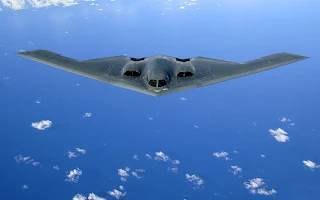Grok 4 Launch: xAI’s Next Leap in AI Innovation


A top U.S. defense engineer of Indian origin betrayed American secrets to China — and two decades later, the fallout still shakes global defense circles.
 |
| B2 Spirit Stealth Bomber |
A chilling espionage story from two decades ago is back in the spotlight — and it’s making waves across global defense circles. The man at the center of this controversy? Noshir Sheriarji Gowadia, an Indian-born aerospace engineer who once helped the United States develop the ultra-secretive B-2 Spirit stealth bomber, only to later sell classified secrets to China.
Now, as new reports suggest that China’s stealth drone technology may have roots in leaked U.S. designs, Gowadia’s name is back in the news. Here’s the full story.
Noshir Gowadia was born in Mumbai, India, in 1944. He moved to the U.S. in the 1960s and became a naturalized American citizen in 1969. A brilliant mind in aeronautics, Gowadia joined Northrop (now Northrop Grumman) in 1968 — the same company that later developed the B-2 stealth bomber, one of the most advanced military aircraft ever built.
Gowadia worked there for nearly 20 years and played a critical role in designing the stealth propulsion system — a key part of the B-2's ability to remain invisible to enemy radar and infrared sensors.
At the time, he was considered a national asset. But that would change.
In 2005, FBI agents raided Gowadia’s luxury home in Maui, Hawaii. What they uncovered was a trail of espionage that shocked even seasoned investigators.
Between 2003 and 2005, Gowadia made six secret trips to China. During those visits, he reportedly helped Chinese officials develop a stealth exhaust system for cruise missiles, similar to the one he designed for the B-2.
Investigators say he pocketed nearly $2 million in payments, using some of the money to pay off his home mortgage and fund an extravagant lifestyle.
He wasn’t just selling to China — reports suggest he also attempted to market U.S. military secrets to Germany, Israel, and Switzerland.
After years of investigation, Gowadia was brought to trial in 2010. The case revealed the full extent of his betrayal.
He was convicted on 14 out of 17 charges, including violating the U.S. Espionage Act and the Arms Export Control Act.
In January 2011, Gowadia was sentenced to 32 years in federal prison.
As of now, he is incarcerated at the Medical Center for Federal Prisoners (MCP) in Springfield, Missouri, with a scheduled release date in 2032.
So why is this old case back in the headlines?
Recent intelligence assessments suggest that China's latest stealth drones — which bear uncanny similarities to the B-2 bomber’s design — may have been influenced by the information Gowadia provided over two decades ago.
The renewed attention stems from how long-lasting and dangerous leaked military technology can be. If true, China’s current advancements in stealth may be the result of one man’s betrayal — years ago.
KF-21 Boramae: South Korea’s Next-Generation Fighter Jet Begins Mass Production
The Gowadia case remains a stark warning to the U.S. defense establishment about the dangers of insider threats. Despite high-level clearance and trust, one individual was able to compromise some of the nation’s most sensitive military secrets.
For India, the story carries mixed emotions. While Gowadia was an Indian-origin success story in American defense, his actions cast a shadow on the legacy of global talent in critical sectors.
📌 Key Takeaways
Noshir Gowadia helped develop the B-2 bomber’s stealth propulsion system.
He was arrested in 2005 and later convicted for selling secrets to China and others.
Sentenced to 32 years in prison, with release expected in 2032.
The case is trending again due to China's emerging stealth tech, possibly linked to Gowadia’s espionage.
India’s Hypersonic Breakthrough: Meet the ET-LDHCM Missile Under Project Vishnu
1. What key role did Noshir Gowadia play in U.S. defense?
A. Nuclear missile launch systems
B. Submarine sonar design
C. Stealth bomber propulsion system
D. Naval radar communication
Comments
Post a Comment
We’d love to hear your thoughts! Please keep your comments respectful and relevant.